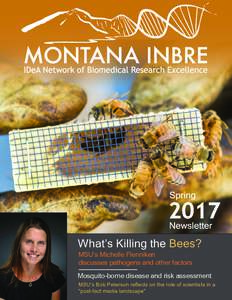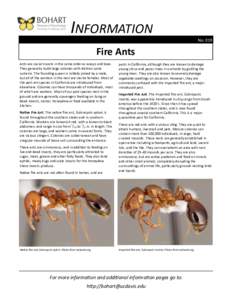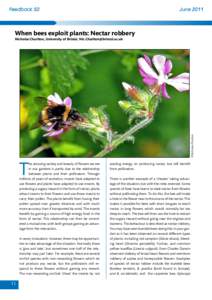<--- Back to Details
| First Page | Document Content | |
|---|---|---|
Date: 2013-06-18 14:06:46Pollinators Biology Bees Insect ecology Apis Swarming Honey bee Bumble bee Worker bee Beekeeping Plant reproduction Pollination |
Add to Reading List |
PDF DocumentDocID: 1x9ur - View Document | |
PDF DocumentDocID: 1vwrM - View Document | |
 | What’s Killing the Bees? MSU’s Michelle Flenniken discusses pathogens and other factors Mosquito-borne disease and risk assessment MSU’s Bob Peterson reflects on the role of scientists in aDocID: 1vlLY - View Document |
 | INFORMATION No. 019 Fire Ants Ants are social insects in the same order as wasps and bees. They generally build large colonies with distinct casteDocID: 1vdmH - View Document |
 | Feedback 50 June 2011 When bees exploit plants: Nectar robberyDocID: 1vaOU - View Document |
 Bee Swarms- Honey Bees A colony of honeybees will consist of tens of thousands of individuals, in the wild they may live in a hollow tree or a crack or crevice in some rocks, although these days you are more likely to fi
Bee Swarms- Honey Bees A colony of honeybees will consist of tens of thousands of individuals, in the wild they may live in a hollow tree or a crack or crevice in some rocks, although these days you are more likely to fi